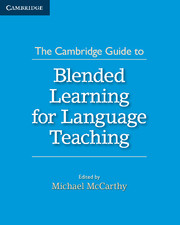Section 3 - Rethinking Learner Interaction
Published online by Cambridge University Press: 22 September 2021
Summary
Chapter 7, by Susan Hojnacki, focuses on one of the core problems of online secondlanguage learning: whether speaking skills can effectively be developed in a computermediated environment, a preoccupation also taken up later in Chapter 12 of this volume by McCarten and Sandiford. Hojnacki begins with the observation that conventional conversation classes frequently offer students only scant amounts of actual talking time. Instead, she sees the potential of asynchronous computer-mediated communication for enabling students to produce more extensive output in the target language, by providing opportunities beyond the four walls of the classroom to practice and produce oral language. Her study appears to have found that such a blended approach, in which communication opportunities are provided outside of the classroom in an asynchronous environment, in particular benefited those students who may feel reticent in the classroom to speak in front of their peers. Interestingly, the students who spoke the least number of minutes during class showed the greatest gains in online speaking time. These students appear to gain confidence online and perform better in the face-to-face classroom. Hojnacki qualifies the positive results of her study with the following caveat: ‘Provided that the online modules were well-developed and followed from sound SLA research, hybrid or blended courses could buy valuable instructor-monitored time on task while not robbing students of faceto- face instruction time.’ Once again the recurring theme of this book, the need to put pedagogy before the technology, appears of paramount importance.
In Chapter 8, Mishan discusses how the harnessing of technology in language learning forces us to redefine what we mean by teaching materials: materials were once the static product held in the hand, the course book, the dictionary, the course-book CD-ROM, etc. and were used in class or at home by the teacher and students. Internet technologies open up the possibility for a dynamic view of materials, where interaction is potentially at the heart of the tools, the activities they make possible and the texts they offer. Tools such as social network platforms, wikis, blogs/vlogs, Twitter and other forms of interactive communication online can offer a positive way out of a static view that simply dumps the course book online, merely substituting a screen for printed paper.
Information
- Type
- Chapter
- Information
- The Cambridge Guide to Blended Learning for Language Teaching , pp. 105 - 106Publisher: Cambridge University PressPrint publication year: 2015
